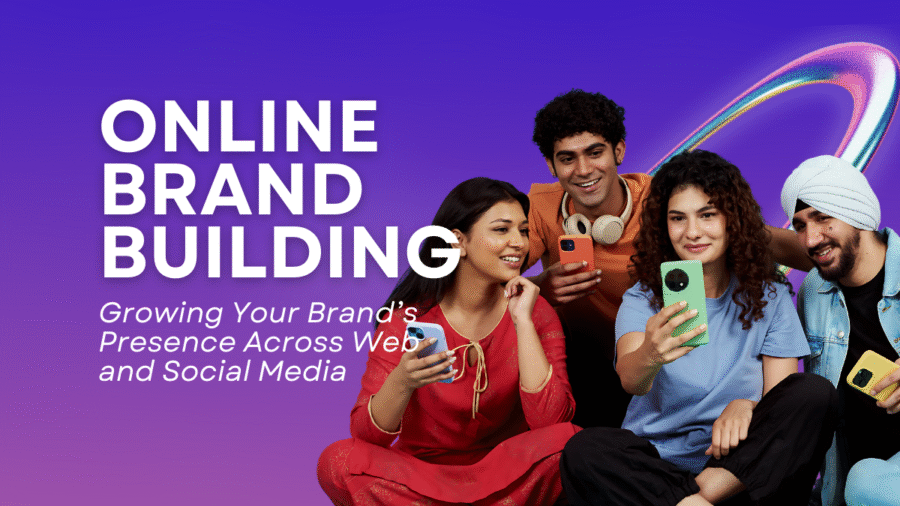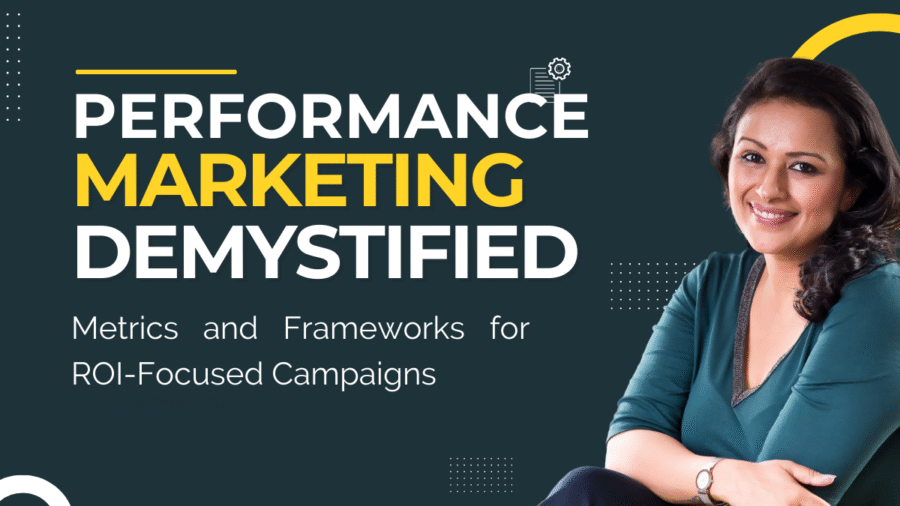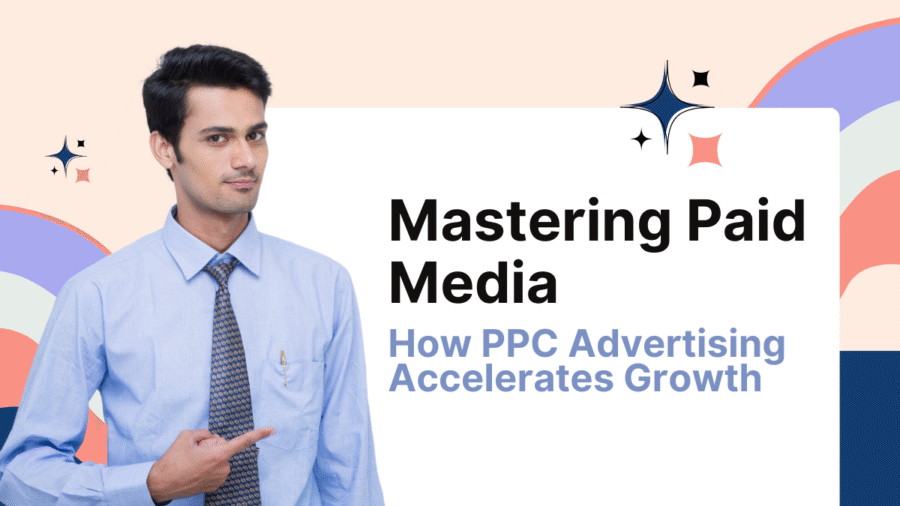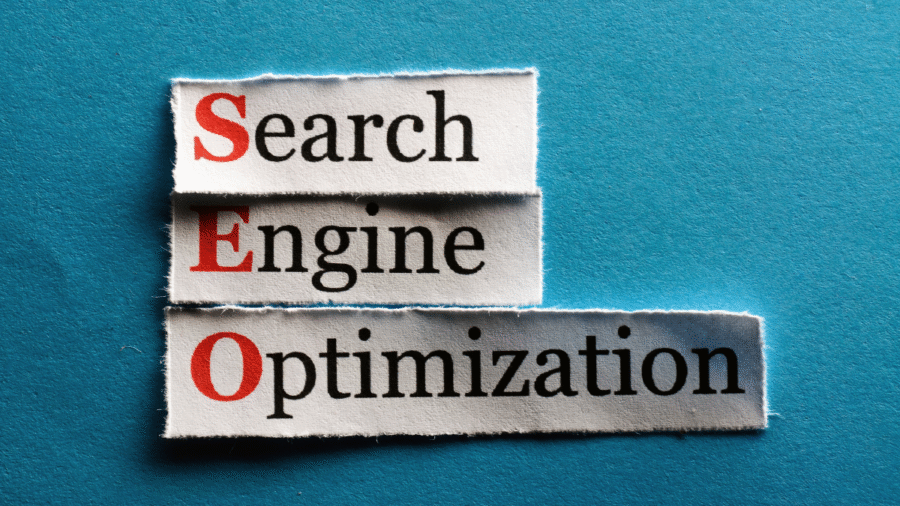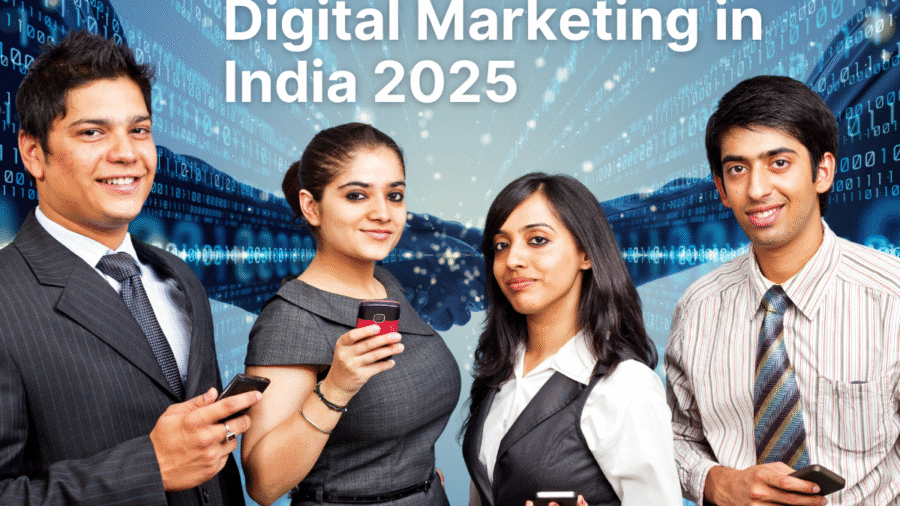We hear the term “digital transformation” a lot these days – often as a catch-all for adopting new tech. But what does it really mean in the context of marketing? In simple terms, digital transformation in marketing is about integrating digital technology and data into every facet of marketing strategy and operations, fundamentally changing how you attract, engage, and serve customers. It’s not just doing the same old marketing on digital channels; it’s reimagining your marketing with a digital-first mindset.
Think of companies like Netflix or Amazon – they are digital transformation exemplified (in entertainment and retail respectively). They use data to personalize experiences, AI to predict what you might want, and automation to streamline operations. They’ve set a bar for customer expectations. Today, whether you’re a small local business or a large enterprise in India, parts of that bar apply to you too. Customers expect prompt responses (often via digital channels), personalized communication, seamless e-commerce or digital payment options, and an overall integrated experience.
So, how can businesses evolve their marketing to meet these expectations and leverage the efficiencies and insights digital offers? Let’s explore the key elements of marketing transformation in the digital era.
Embracing a Customer-Centric, Data-Driven Approach
At the heart of digital transformation is a shift to customer-centricity powered by data. Philip Kotler, the legendary marketer, has always emphasized understanding customer needs and behaviors. In the digital age, we have more data on customer behavior than ever, and tools to act on it in real-time.
Kotler introduced the framework of Marketing 4.0 and 5.0, where he talks about the move from traditional 4P’s to 5A’s in the customer path: Aware, Appeal, Ask, Act, Advocate. This model acknowledges that the customer journey is nonlinear and heavily influenced by digital – customers might become aware of your brand on Instagram (Aware), find it appealing and seek more info on Google or ask friends (Appeal, Ask), decide to purchase online or offline (Act), and if delighted, leave a review or recommend you on WhatsApp (Advocate).
To navigate this journey:
- Map the Customer Journey Digitally: Understand how prospects typically discover and research products in your category now. Maybe earlier you relied on foot traffic and word-of-mouth; today that word-of-mouth might be happening in a Facebook group or a Telegram channel. Identify key “digital touchpoints” – maybe it’s your website, social media pages, listings on marketplaces, email communications, chat interactions. Ensure these are all optimized and telling a consistent story (a customer should get the same impression of your brand whether they see a Tweet or speak to your chatbot or read a blog review).
- Break Silos – Integrated Marketing: Digital transformation often fails if a company just layers new tech on old silos. A true transformation means marketing, sales, customer service, and IT (and other departments) collaborate closely. For example, if someone tweets a complaint, your marketing team, customer service, and product team might all need to coordinate to address it and fix the root issue. The lines between functions blur in service of the customer. Tools like CRM systems help here – everyone has a single view of the customer’s interactions. A practical tip: share data. If your e-commerce team knows that product X sells more to demographic Y in the South, share that insight with the social media marketing team to create region-targeted content or with R&D to consider expanding that line. Data silos are the enemy of digital transformation.
- Personalization at Scale: One of the biggest boons of digital is the ability to personalize. Use data to segment your audience and tailor messages. Even basic personalization like using the customer’s name in emails or showing recommended products based on past browsing can increase engagement. According to a Statista study, 60% of marketers note that inbound strategies like SEO and blog content (which can be personalized and targeted) bring the highest quality leads. That’s because those content and SEO efforts can be very attuned to customer needs (e.g., creating blog posts answering specific customer questions brings in highly relevant traffic).
- Feedback Loops and Agility: Digital channels give immediate feedback. You can see how many clicked your ad today, or what people are saying in comments. Use this feedback to iterate quickly. This is part of transformation – moving from long marketing cycles (like an annual campaign plan set in stone) to more agile sprints where you test, learn, and adjust. If an ad isn’t performing in a week, tweak it or try a new platform. If customers are asking for a feature, maybe run a quick pilot or social media poll to validate demand before going all in. Essentially, treat marketing like a dynamic, ongoing experiment rather than a static plan.
Leveraging Technology: AI, Automation, and Analytics
Digital transformation is not just about doing things on computers; it’s about using advanced technologies to enhance marketing effectiveness.
A few key tech areas:
- Marketing Automation: Automating repetitive tasks or triggered communications can save time and also improve responsiveness. For instance, set up automated welcome email series for new sign-ups, schedule social media posts, or use chatbots to handle common customer queries instantly. This not only saves manpower, but also ensures no lead falls through the cracks (every website inquiry gets at least an initial rapid response). Tools like HubSpot, Marketo, or even simpler ones like MailChimp for email can be transformative for a small team.
- Artificial Intelligence and Machine Learning: This can sound intimidating, but many AI features are now user-friendly. AI can help in many areas:
- Personalization & Recommendations: Think of Netflix’s “Recommended for you” or Amazon’s “Customers who bought this also bought…” – smaller businesses can implement recommendation engines too (many e-commerce platforms have plugins for this). AI looks at user behavior patterns to suggest content or products likely to interest them.
- Ad Optimization: Google and Facebook ad platforms heavily use AI. For example, Google’s responsive search ads let the AI mix and match your headlines and descriptions to figure out the best performing combo for each user query. Leveraging these AI-driven ad types can improve ROI. Also, AI can automatically allocate budget to the best performing ads (smart bidding strategies).
- Customer Insights: AI can analyze large data sets (like thousands of customer feedback entries or social media mentions) to find themes. Perhaps an AI text analysis of reviews shows many mentions of “fast delivery” as a positive and “packaging” as a negative – that’s a strategic insight.
- Chatbots & Virtual Assistants: Customer service chatbots (on your site or on WhatsApp/FB Messenger) can handle routine interactions 24/7. Modern chatbots with NLP (Natural Language Processing) are getting better at understanding free-form questions. They’re not perfect, but they can help handle volume and gather initial info to pass to human agents. They also give a very digital-native vibe to your brand, if done right (customers, especially younger ones, often like the instant response).
- Analytics and Attribution Tools: As part of transformation, you should be capturing data on all campaigns (UTM tags, etc.), and using tools like Google Analytics, Mixpanel, or more advanced customer data platforms to get a single customer view. This is crucial in measuring what’s working. And it ties to transformation because historically, marketing spend was hard to tie to results (the old “half the money is wasted, but don’t know which half” adage). Today, with proper attribution modeling, you can see that (for example) a combination of Google Ads and a follow-up email campaign yields the best customer lifetime value, whereas certain display ad spend isn’t pulling weight – then you reallocate budgets accordingly. Data-driven budget decisions are a big shift from gut-based ones.
- Digital Platforms Integration: If you haven’t already, adopting digital channels such as e-commerce, mobile apps, or at least online payment and ordering systems is part of marketing transformation too. Because marketing isn’t just promotion – it’s the entire experience (Product, Place, Promotion, Price – all can be transformed). For example, many traditional retailers in India went digital during the pandemic by listing on Amazon/Flipkart or setting up Shopify stores – those who did, not only survived but sometimes found a new nationwide market for their goods. Similarly, if you’re in B2B, using digital tools for webinars or virtual demos might transform how you do lead generation (replacing or supplementing in-person trade shows with always-on webinars and LinkedIn networking, etc.)
Cultural Change: Upskilling and Mindset
Perhaps the toughest part of digital transformation in marketing is the human element. Tools alone won’t transform you unless your team is on board and skilled to use them effectively.
- Upskilling Teams: Ensure your marketing team is continuously learning digital skills. This might mean training your traditional marketers in digital analytics, or hiring new talent with specific skills like SEO, content marketing, or data analysis. Also, break the attitude of “this is how we’ve always done it.” Encourage curiosity and learning from experimentation. Celebrate data discoveries or successful tests, not just big campaign launches.
- Customer-Centric Culture: Make sure every team member, whether in marketing or elsewhere, understands that the customer experience is the marketing. Encourage empathy – for example, occasionally have everyone on the marketing team (and beyond) read customer support tickets or listen in on sales calls. It keeps the focus real. When management emphasizes metrics like customer satisfaction (NPS scores, etc.) as much as sales numbers, it signals a culture shift that customer-centric digital improvements (like revamping that confusing website or adding self-service options) are just as valued as, say, running a flashy ad.
- Agility and Collaboration: Consider adopting agile marketing methodologies – small cross-functional teams working in short sprints on specific campaigns or projects, meeting frequently to adjust course. This is a change from big departmental divides and lengthy campaign timelines. Agile methods, borrowed from software development, can increase speed and adaptability in marketing too. For instance, instead of planning a campaign for 6 months, you might plan for 2 weeks, execute, then use results to plan the next 2 weeks.
- Leadership and Vision: Often digital transformation in any area requires leadership that truly believes in it. If top management still insists on doing things the old way or doesn’t invest in digital tools and people, transformation initiatives stall. Conversely, leaders who champion a vision of a digitally savvy, customer-first company inspire teams to take initiative. For example, a CEO posting on LinkedIn and engaging in industry digital dialogues sets a tone that the company is embracing new platforms.
Case in Point: Traditional Business Goes Digital
Let’s consider a quick composite example of digital transformation:
A mid-sized Indian FMCG manufacturer (let’s call it “SpiceCo”) that traditionally sold spices through distributors and never interacted directly with customers.
Pre-transformation: SpiceCo’s marketing was basically trade marketing – point-of-sale displays, print ads in food magazines, maybe sponsoring a cooking contest on TV. They had no online presence to speak of (just a basic website with an address). They had zero direct data on who buys their spices and why.
Post-transformation vision: SpiceCo decides to go direct-to-consumer alongside traditional channels. They launch an e-commerce site offering their spices as well as exclusive spice kits and recipe booklets. They start content marketing – a YouTube channel with quick recipe videos, an Instagram sharing cooking tips and beautiful food photography. They implement a CRM where anyone who buys or signs up for recipes enters an email funnel – getting weekly recipes (with spice suggestions of course), festival-specific meal ideas, etc.
They also invest in SEO – soon their blog articles like “How to make authentic garam masala at home” rank on Google, bringing lots of organic traffic. They use Kotler’s 5A framework to shape this:
- Aware: People discover SpiceCo from a recipe video (social) or article (search).
- Appeal: They like the valuable content and see SpiceCo as a useful brand.
- Ask: They check out SpiceCo’s site or ask their friends if they’ve tried these spices. SpiceCo monitors social media and sees questions; their team actively answers with helpful info (not just “buy our spice” but genuinely helpful cooking info). This builds trust.
- Act: Many decide to buy a spice kit from SpiceCo’s new online store, enticed by a Diwali special bundle and the ease of UPI payment and quick delivery promise.
- Advocate: After enjoying the spices and recipes, some leave a positive review and tag SpiceCo on a homemade dish post – SpiceCo reshares these UGC posts, celebrating their customers (which further humanizes the brand).
Internally, SpiceCo had to make changes: they hired a few digital marketers and data analysts, trained existing staff on using an e-commerce CMS and CRM, partnered with a delivery provider for last-mile. Management set KPIs like website traffic, online sales, and customer satisfaction ratings as key performance metrics in monthly reviews – not just wholesale volumes.
Within a year, SpiceCo saw not only a new revenue stream from online sales, but also their retail sales got a lift because the brand’s visibility and favorability grew among consumers (some would see a recipe online but buy the pack in a nearby store – either way SpiceCo won). They now have thousands of customer emails and feedback points, informing their product R&D (they noticed many vegetarians asking for an all-in-one curry masala, which they then developed). That is digital transformation – using digital tools and data to evolve marketing from one-way pushing products to an interactive, data-informed, customer relationship-building engine.
Conclusion: Digital Transformation is a Journey, Not a Destination
For Indian businesses, digital transformation in marketing is both a challenge and a huge opportunity. It requires investment (time, money, training) and sometimes a leap of faith away from comfortable old methods. But the potential rewards are substantial: more efficient marketing spend, stronger customer loyalty, the ability to scale rapidly, and the resilience to adapt when the market shifts (as we saw with COVID-19 accelerating digital adoption massively).
One thing to keep in mind: it’s okay to start small and then expand. You might start by just establishing a solid social media presence and basic analytics, then gradually add e-commerce or automation or advanced AI tools. Transformation is iterative. What’s important is the mindset of continual improvement and staying current with consumer behaviors and tech trends.
Remember, nearly half of marketers see organic search (SEO) as the top ROI-driving channelseoprofy.com and more than half of B2B buyers now make decisions before ever talking to a salesperson – all from online research. These stats underscore that digital is where the battle is – transform or be left behind.
At AG Digitec, as digital transformation specialists, we help companies navigate this journey. From auditing your current digital touchpoints, crafting a transformation roadmap, to executing with new tech and training your team, we act as partners in change.
Are you ready to transform your marketing for the digital age? Explore our Digital Transformation Consulting services or contact us for a consultation. Let us help you harness data, technology, and creativity to not only meet today’s customer expectations but to delight them in ways you never could before – driving sustainable growth in our rapidly evolving digital world.

